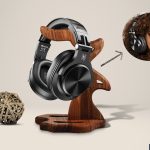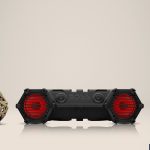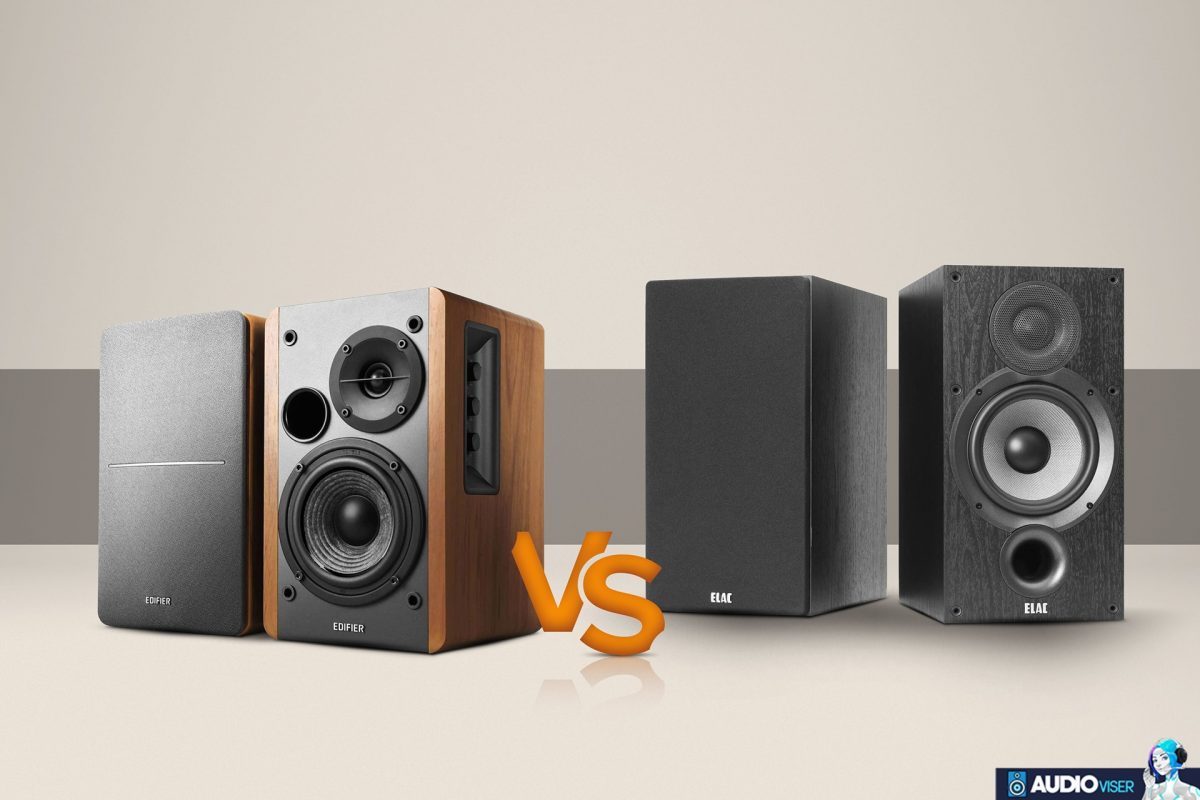
Bringing high-quality music into the home becomes a top priority for anyone.
To do so, you’ll need a nice speaker that fits your demands, but before you start looking into renowned manufacturers, there’s something you should know.
There are two types of speakers: passive and active.
In today’s article, I’ll explain the differences between passive and active speakers.
So bear with me and read the article until the conclusion.
Passive vs. Active Speakers: What’s the Difference?
Let’s cut to the chase and explain the differences right away, and then I’ll go over both of them.
Active speakers require power, but passive speakers do not.
This is due to the fact that active models come with built-in amplifiers, whilst passive variants need an external power amplifier.
This distinction also implies that active speakers require electricity to operate (to power their amplifiers).
Passive speakers, on the other hand, do not require any power to operate.
Let’s elaborate on both types of speakers now so you can decide which one will suit your needs the most.
Something important that you should know is the definition of a “powered speaker”
Basically, powered speakers have an amplifier built into them, so all you have to do to use them is plug them into an outlet and you are ready to enjoy music.
Although all powered speakers are considered active, not all powered speakers should be referred to as active.
The difference is that a powered speaker setup uses the same signal route as a passive setup, but one of the speaker enclosures conceals the amplification, which is frequently both a preamplifier and a power amplifier.
Passive Speakers
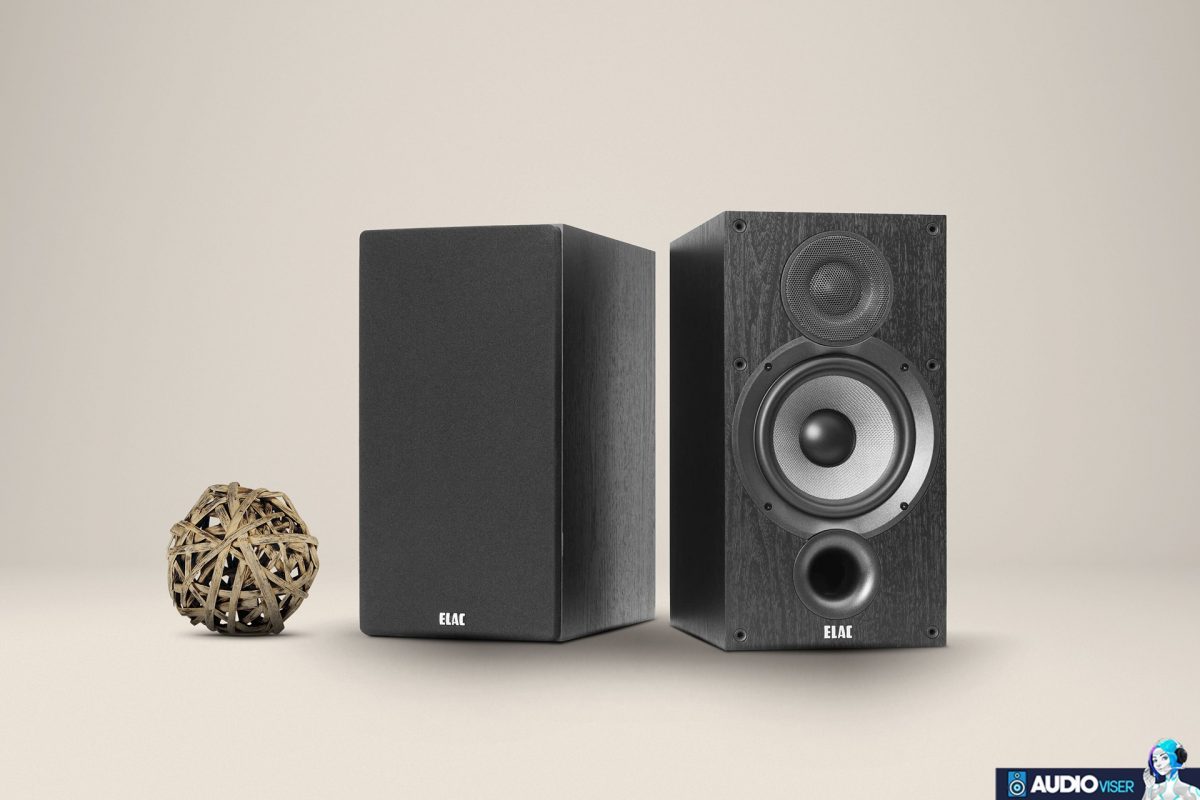
As previously stated, a passive speaker lacks a built-in amplifier and hence requires an external amplifier or even a receiver.
Simply explained, the crossover in passive speakers is passive and is located between the speaker terminals, the exact location where the external amplifier and the drivers are connected.
(I’ll go into more detail on crossover later.)
Passive Speakers’ Benefits
- Easy Placement: Passive speakers have the advantage of being simple to install because there are fewer cords and your area will not be cluttered with an unneeded speaker cable.
- Upgrades are possible: With passive speakers, you can switch between external amplifiers instead of being compelled to use the built-in amplifier.
- Portable/Lightweight: Passive speakers are lighter than active speakers because they don’t have built-in amplifiers. Because they are lighter, you will have no trouble transporting them; they make transportation a breeze.
- Price: Passive speakers are also less expensive and more versatile. What I mean is that they can be used by anyone, whether an audiophile or a regular Joe, and the price ranges from budget to high-end.
Active Speakers
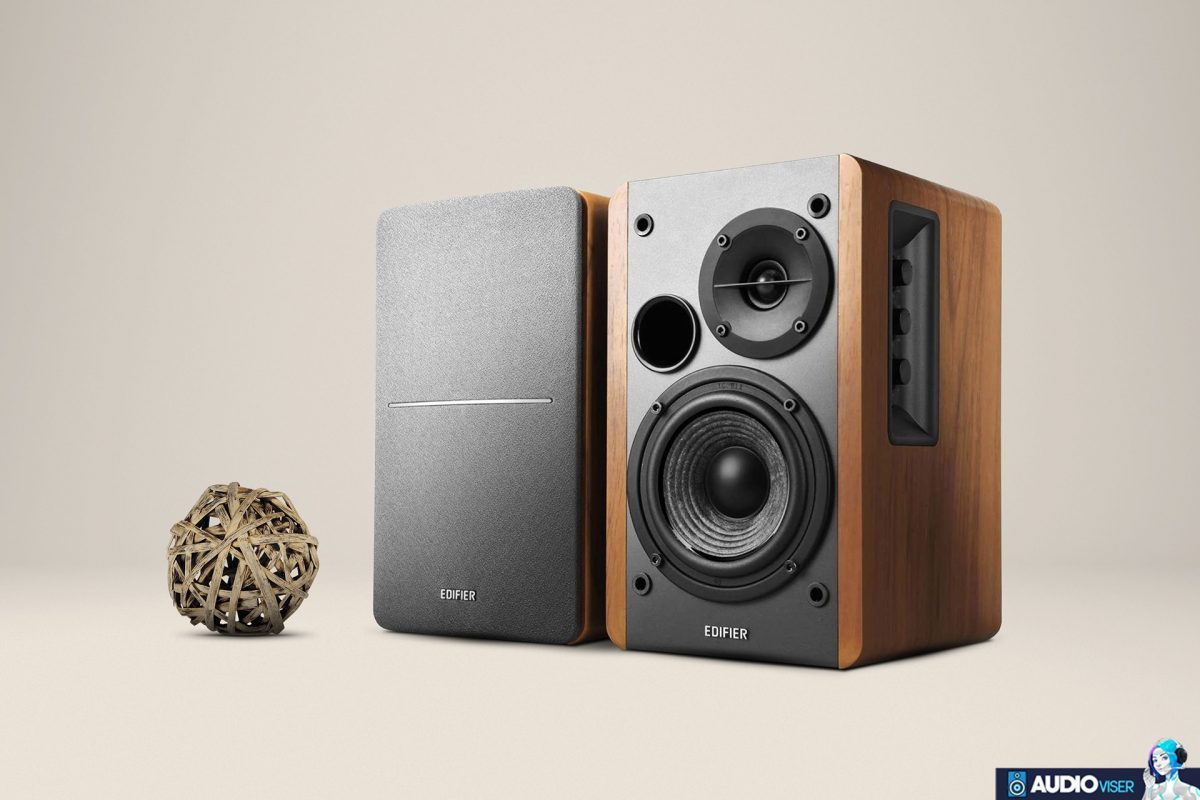
Active speakers, on the other hand, can be classified as professional speakers, due to having a better overall sound quality thanks to the built-in amplifier.
An active speaker consists of an enclosure, one or more speaker drivers, an active crossover network, and a separate amplifier for each of the frequency bands divided by the crossover network.
Active Speakers’ Benefits
- Sound Quality: When compared to a passive filter, their crossover architecture allows the designer significantly more control over the signal and is far less prone to losses and distortion, resulting in better overall sound quality.
- Multiple Amplifiers: There are multiple built-in amplifiers (typically one for each driver) and no external amplifier or receiver is required.
- Fragmented Design: Most active speakers are designed as single “all-in-one” systems.
Defining Crossovers
Because the crossover plays such an important part in characterizing the differences between the active and passive speakers, allow me to take a minute to describe the crossover’s purpose and the types of crossovers.
In simple words, A crossover acts as a filter for a speaker or group of speakers, blocking out undesired frequencies. This is highly beneficial since it allows us to feed each speaker only the frequencies that it will most efficiently and effectively play.
Just like with speakers, there is a passive crossover and an active one.
Passive Crossovers
A passive crossover, for example, can be found in both passive and powered speakers, and it splits the audio signal once it is powered by the amplifier.
A passive crossover is made out of high-power-rated resistors, capacitors, and inductors.
In a passive crossover, there are no active components such as transistors or operational amplifiers that require power.
The main advantages of passive crossovers are their low system cost and the fact that they do not require power.
Passive crossovers, on the other hand, limit engineers’ versatility because they are frequency and impedance specific.
Active Crossovers
Active crossovers, in contrast to passive crossovers, can be found in active speakers and split the audio signal before it is amplified.
The audio signal is usually processed at a line before being amplified, thus the components aren’t striving for high power levels.
Active crossovers make use of active components like op-amps and transistors, which require power to work.
Active crossovers have the biggest advantage of allowing for a speaker system with one dedicated amplifier for each driver. A system in which the amplifiers are linked directly to the drivers without the need for a passive crossover.
Flipping the coin, a disadvantage would be that they tend to be more costly.
Related Questions to Speakers
I’m sure there are two questions on your thoughts right now. What makes a 2-way speaker different from a 3-way speaker?
Despite the fact that I made a blog specifically for that, I will explain it in a few lines below.
What exactly is a two-way speaker?
A 2-way speaker has two types of drivers: a woofer and a tweeter. The woofer is a low-frequency speaker, whereas the tweeter is a high-frequency speaker.
What exactly is a three-way speaker?
A three-way speaker, on the other hand, uses three drivers to produce sound: a woofer and two tweeters. Each of these has its own unique efficiency throughout a broad spectrum of sound frequencies.
Final Words, Conclusion
I believe I was as specific as I could be with words.
The main distinction is that active speakers include an amplifier, whereas passive speakers do not.
When it comes to deciding which is the best, I can’t give you an exact answer because both sorts have advantages and disadvantages.
It all boils down to personal preferences, what you need it for, and your budget.
I would recommend active speakers for more professional use because they are more powerful and have better sound quality.
I hope this clarifies all of your concerns, have fun.
Further Reading
You can read some more blogs if you found the one above amusing.
For example, there is a list of some great headphones for seniors. Not only for seniors but there are also some headphones for babies.
A comparison between Polk’s S30 and S35 Moreover, there’s also how to connect Bluetooth headphones to the Oculus Quest 2.
Not to mention the list of amazing bookshelf speakers priced under $300.
Sound Artist
I’m a Sound Artist creating immersive sonic experiences. I turn everyday objects into music, turning the mundane into something marvellous!


